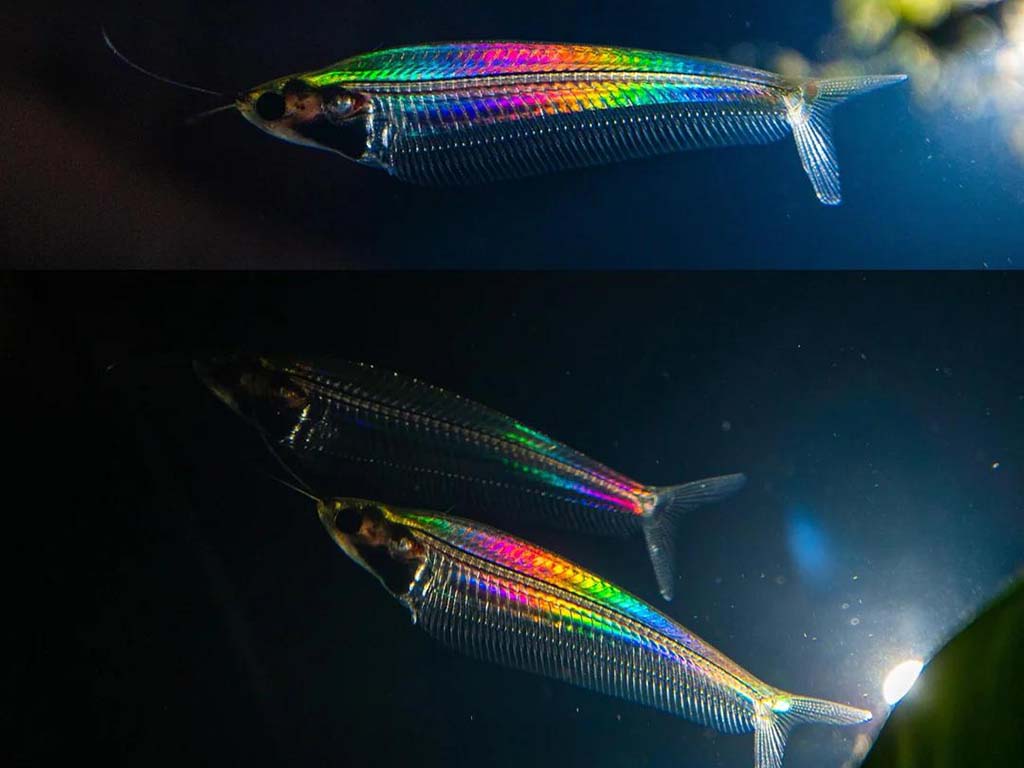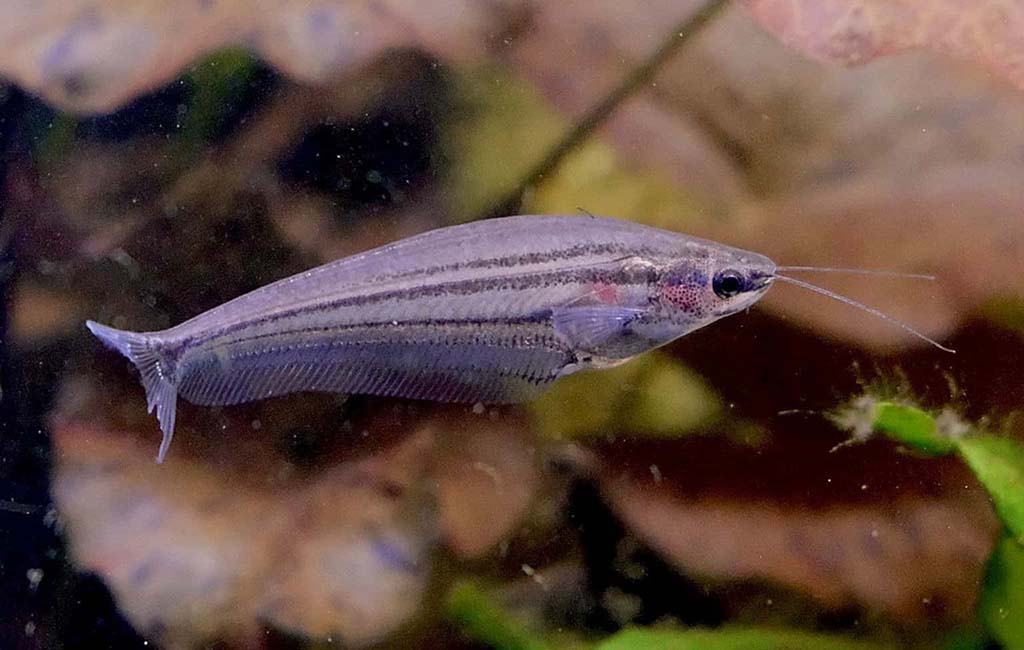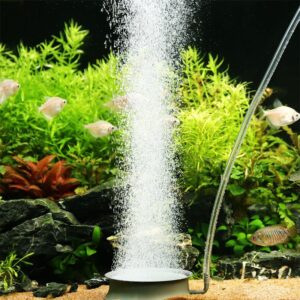The care of glass catfish is relatively easy and can be quite interesting for fish lovers. These fish have clear body structures and some of them have somewhat peculiar behavior patterns that must be addressed to ensure the fish survive in the home aquatic environment. Some of the questions that time arise include; the fragility of the different species such as ghost catfish, how to arrange the tanks, and how to ensure their wellbeing.
Content Table
This article will explore more topics about glass catfish care, including the required tank type, lighting, water, and oxygen supply. It also provides information on breeding the fish and the management of pregnant glass catfish. Let’s explore!
What Is the Specialty of Glass Catfish Fish
The Glass Catfish(Kryptopterus vitreolus) is such a prominent species that is more popular for its features and its transparent look. Here’s an overview of its specialty:
Characteristics
- Translucent Body: The glass catfish gets its name from the fact that the fish are almost entirely see-through, and look very much like silhouettes at the bottom of the lake. There is some degree of transparency; one can see through the skin, at least in part, their skeletal and nervous systems as well as internal organs.
- Size: Standard sizes for these fish could be about 6 inches (15 cm), but some could be slightly larger depending on the environments provided to them.
- Appearance: They have a long slender body shape and thin paddles. They are generally of a clear appearance but can give off a kind of shine when well illuminated.
- Diet: Glass catfish are carnivorous and major in small invertebrates, algae, and detritus materials. They require a diet of high-quality flake or pellet food but should also be supplemented with live/frozen foods.
Habitat
- Native Region: Glass catfish are endogenous to the region of Southeast Asia, where they live in the waters of Thailand, Cambodia, and Vietnam. They are most often found in Sierra regions of slow-moving streams and rivers.
- Water Conditions: These fish are adapted to slightly acidic to neutral, warm water temperatures of between 75-80°F (24-27°C). They are most comfortable in surroundings that are full of potted plants and things they can snug behind.
Peculiarities
- Social Behavior: Glass catfish are active and shoaling fish, meaning you should not keep less than 5 to 6 of them in a tank. Thus, in large groups, they are less stressed and more active.
- Delicate Nature: They are somewhat fragile and may be influenced by water parameters and pressure. For the health of fish, it is necessary to have clean water of stably directed parameters.
- Rare and Special: As a result of their see-through nature, glass catfishes are somewhat rare and sought after because of this in the aquarium trade.

rainbow glass catfish
Full Grown Glass Catfish
Matured glass catfish are beautiful, clear fish that would be of great interest to those who are interested in aqua fish. Here’s a look at their characteristics, needs, and requirements when fully grown.
Size and Appearance
- Size and Appearance
Full-grown size: Glass catfish are medium-sized fish and will require an aquarium of no less than 20 gallons, the adult length of glass catfish is approximately 6 inches and can grow up to 8 inches when environmental conditions are favorable.
- Appearance:
Their outer surface is moderately opalescent and while they retain sexual characteristics and have no skin, their internal anatomy is exposed in detail with even the endoskeleton visible, so they appear somewhat ghostly. When they grow older, their skin may develop more layers and be firm, but they remain translucent.
Glass Catfish Tank Needs
- Tank Size
Although most are peaceful and shoaling in nature, at least thirty gallons (around 114 liters) should be provided for a small group of glass catfish for a proper home. The larger the area the better, but they prefer to live in groups due to their schooling behavior. A tank of 40 gallons or more is recommended for large schools to allow the fish enough space to grow.
- Tankmates
Glass catfish are peaceful and do well with other non-aggressive species. Some ideal tankmates include small peaceful fish like tetras, rasboras, or other community species. Avoid keeping them with larger or aggressive fish, as they could stress or harm the delicate catfish.
- Schooling Behavior
Glass catfish are slow-moving, and they can be kept with other slow-moving fish with no problem. Suitable companions for these little fish are other small, peaceful fish, such as tetras, rasboras, or other fish used in community tanks. They should not be housed with other large or boisterous fish, as this will stress the fragile catfish.
Basic Set up of Glass Catfish Fish Tank
Installation of a fish tank for glass catfish is best done after closer observation and determination of what the fish requires to live healthily.
- Tank Size and Location
Reef catfish are best kept in a tank of 20 gallons and above to allow them to have their free movement. Put the tank where it will not be exposed to direct sunlight, since it can make the water either too hot or provide a breeding ground for algae.
- Water Parameters
These fish are most adapted to slightly acidic to slightly alkaline water with a pH of between 6 and 7.5. The water temperature again should be between 72 °F to 82 °F (22 °C to 28 °C). Nitrates should be below 20 ppm and the ammonia and nitrite should be at 0 ppm at all times. Water quality must, therefore, be maintained using a dependable filtration system that will deliver oxygenated and clean water.
- Substrate
Avoid high abrasiveness of the substrate with materials like sand or fine gravel to protect the delicate-bodied animals. Do not walk through sharp rocks or large pebbles.
- Lighting
Glass catfish are better off with low to moderate lighting. LED lights which can adjust the brightness of the light are good to use to be able to create the conditions of the natural environment and prevent the growth of algae. The light must be regulated to allow about 8 to 12 hours gap to determine the right environmental conditions.
- Oxygenation
These fish need their water to be highly oxygenated. A good filtration system that has a slow water flow is useful, but aeration through an air pump or air stones will always be beneficial, particularly if your tank contains multiple fish.
- Nutrients
Fishes of the Glass catfish type are essentially carnivorous and should be offered flake food, small pellets, and live or frozen foods like brine shrimp. It complements their transparent bodies and health, as a whole.

pregnant glass catfish
How to Take Good Care of Glass Catfish Fish
Glass catfish are peaceful and easy-to-care-for fish, ideal for community aquariums. To keep them healthy, provide:
- A well-maintained tank with a temperature between 72-82°F (22-28°C) and a pH of 6.5-7.5.
- They prefer a densely planted tank with gentle filtration, as they are sensitive to strong currents. Feed them high-quality flakes, live, or frozen foods like brine shrimp and daphnia.
- Keep their environment calm, as they can be stressed by sudden changes or aggressive tank mates.
- Regular water changes and monitoring of water quality are essential to prevent disease and ensure their longevity.
| Feature | Details |
| Scientific Name | Kryptopterus vitreous |
| Common Names | Glass Catfish, Ghost Catfish, Phantom Catfish, Skeleton Catfish |
| Origin | Thailand, Indonesia |
| Size | 3-6 inches (7.6-15 cm) |
| Lifespan | 7-8 years |
| Tank Size | Minimum 30 gallons (114 liters) |
| Water Temperature | 75-80°F (24-27°C) |
| pH | 6.0-7.0 |
| Water Hardness | Soft to medium |
| Water Type | Freshwater |
| Diet | Omnivorous (flake food, bloodworms, brine shrimp) |
| Temperament | Peaceful |
| Tank Mates | Peaceful fish like tetras, rasboras, and other catfish species |
| Lighting | Low to moderate |
| Water Changes | 25% weekly |
| Breeding Difficulty | Very difficult |
About the Pregnant Glass Catfish
Pregnant glass catfish are rare, as they don’t give birth to live young but rather lay eggs. However, breeding them in captivity can be challenging. To encourage breeding, provide a
- Mature, stable aquarium with a temperature between 75-80°F (24-27°C) and a slightly acidic to neutral pH (6.5-7.5).
- Offer plenty of hiding spots with plants or decorations to make the fish feel secure.
- Glass catfish require a high-quality diet, including live or frozen foods like brine shrimp, to stay healthy and ready for breeding.
How to Breed the Fry
If the female glass catfish is pregnant, she should have some kind of lump around the abdominal area. They will generally be laid so that the male fish will fertilize them on the outside. After the eggs have been laid, the parents should be relocated so as not to eat the eggs laid down.
The fry hatch in about 72–96 hours. Sand them with infusoria or powdered fish food until they get to a size that they will need. These fry require clean and stable water conditions for them to grow properly.
Closing Remarks
Therefore, when keeping glass catfish proper consideration should be made to their specific needs, these include: maintaining a stable water temperature, gentle water circulation, and peaceful water conditions in the aquarium. With proper temperature, pH, and diet, as well as the correct tank mates and breeding environment, you can have these fascinating see-through fishes for years.


Leave a comment